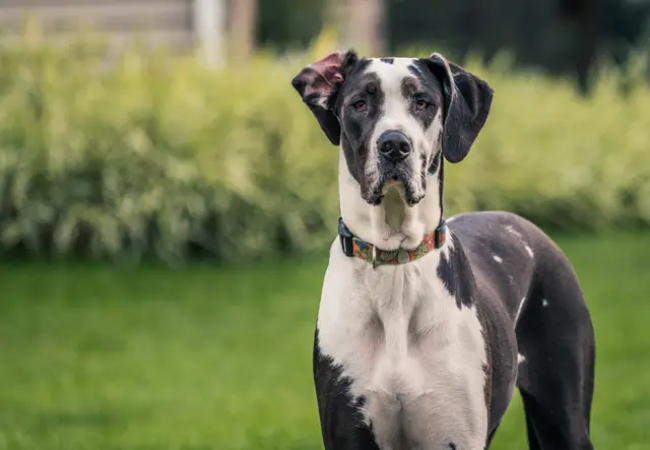Great Dane 2025 Guide: Temperament, Care & Training 🐶

In this article
Great Dane 2025 Guide: Temperament, Care & Training 🐶
By Dr. Duncan Houston BVSc
The Great Dane is a towering yet affectionate breed often referred to as the “Apollo of dogs.” With a heart as big as their size, these gentle giants are loyal companions, known for their easygoing demeanor and impressive presence. In this complete 2025 guide, you'll learn how to care for, train, and raise a happy, healthy Great Dane. 🐾
📜 Breed Origins
Despite their name, Great Danes originated in Germany as boar hunters and estate guardians. Their lineage includes Mastiff-like dogs and Irish Wolfhounds, resulting in a strong yet elegant companion breed. Today, they're prized for their gentle nature and regal stature. 🇩🇪
🧠 Temperament & Personality
Great Danes are patient, affectionate, and surprisingly calm indoors:
- Gentle: Known for their loving and tolerant nature
- Protective: Will defend their family, though not aggressive
- Affectionate: Thrive on attention and physical closeness
- Sensitive: Respond best to calm, positive guidance
🏡 Ideal Home Environment
These dogs require space and comfort. Ideal homes include:
- Homes with large living areas or yards
- Families with a calm, consistent routine
- Owners able to handle and support a giant-breed lifestyle
Not ideal for small apartments or homes with slippery floors and tight spaces. 🏡
✂️ Coat Type & Grooming
Great Danes have a short, smooth coat that’s easy to maintain:
- Brushing: Once or twice weekly to reduce shedding
- Bathing: Every 6–8 weeks or as needed
- Ear & Eye Care: Weekly cleanings recommended
- Nail Trimming: Monthly or as needed
🏃♂️ Exercise & Enrichment
While not hyper, Danes need daily structured movement:
- 30–45 minutes of walking or play daily
- Avoid high-impact or stair-heavy exercise during growth
- Enrichment toys and basic training for mental stimulation
They enjoy interaction but aren’t high-drive. 🧠
🍗 Nutrition & Feeding
Feed a large/giant breed formula tailored for joint health and slow growth:
- Animal proteins (chicken, lamb, fish)
- Joint-support supplements (glucosamine, chondroitin)
- Controlled calcium and phosphorus for skeletal support
Split into 2–3 meals daily to reduce bloat risk. Plan diets with Ask A Vet. 🍽️
🩺 Common Health Concerns
Great Danes have a shorter lifespan and are prone to several conditions:
- Bloat (GDV): Life-threatening—feed in small portions, no post-meal exercise
- Hip Dysplasia: Regular joint monitoring is essential
- Cardiomyopathy: Heart condition common in large breeds
- Bone Cancer: Osteosarcoma risk increases with age
Stay ahead with early detection and planning via Ask A Vet. 🩺
🎓 Training & Socialization
This breed is intelligent but requires gentle, confident leadership:
- Start leash, crate, and socialization training early
- Use reward-based methods—harsh correction is counterproductive
- Consistency and calm praise build long-term habits
🧘♂️ Emotional Needs
Great Danes crave companionship and thrive in calm, steady homes:
- Routine is reassuring—set predictable schedules
- They’re sensitive to conflict or raised voices
- Provide comfort and enrichment when left alone
Need behavior advice? Try Ask A Vet. 🧠
🏁 Final Thoughts: Is the Great Dane Right for You?
If you want a loyal, gentle, and impressive companion with low grooming needs and a big heart, the Great Dane may be your perfect match. With health planning, training, and affection, they become affectionate and majestic family dogs. ❤️
Ready to build a care plan for your Great Dane? Start a consult at Ask A Vet today!






